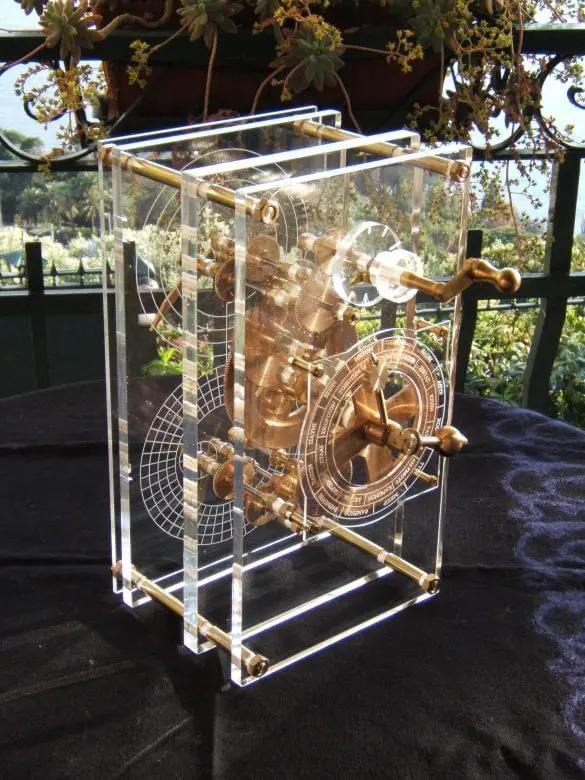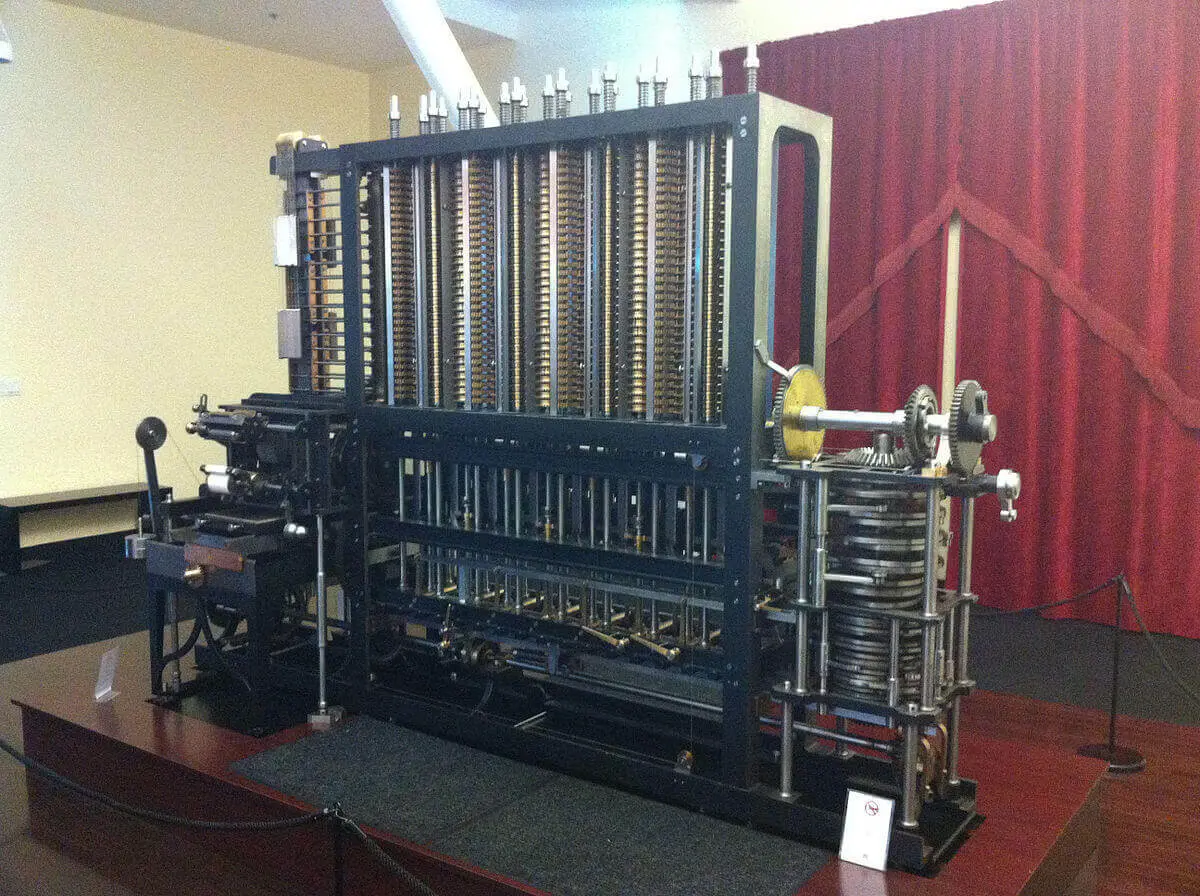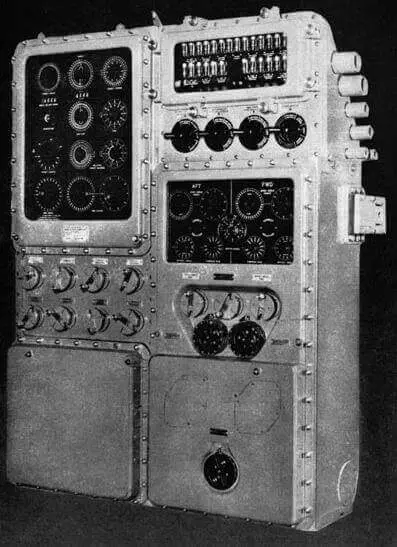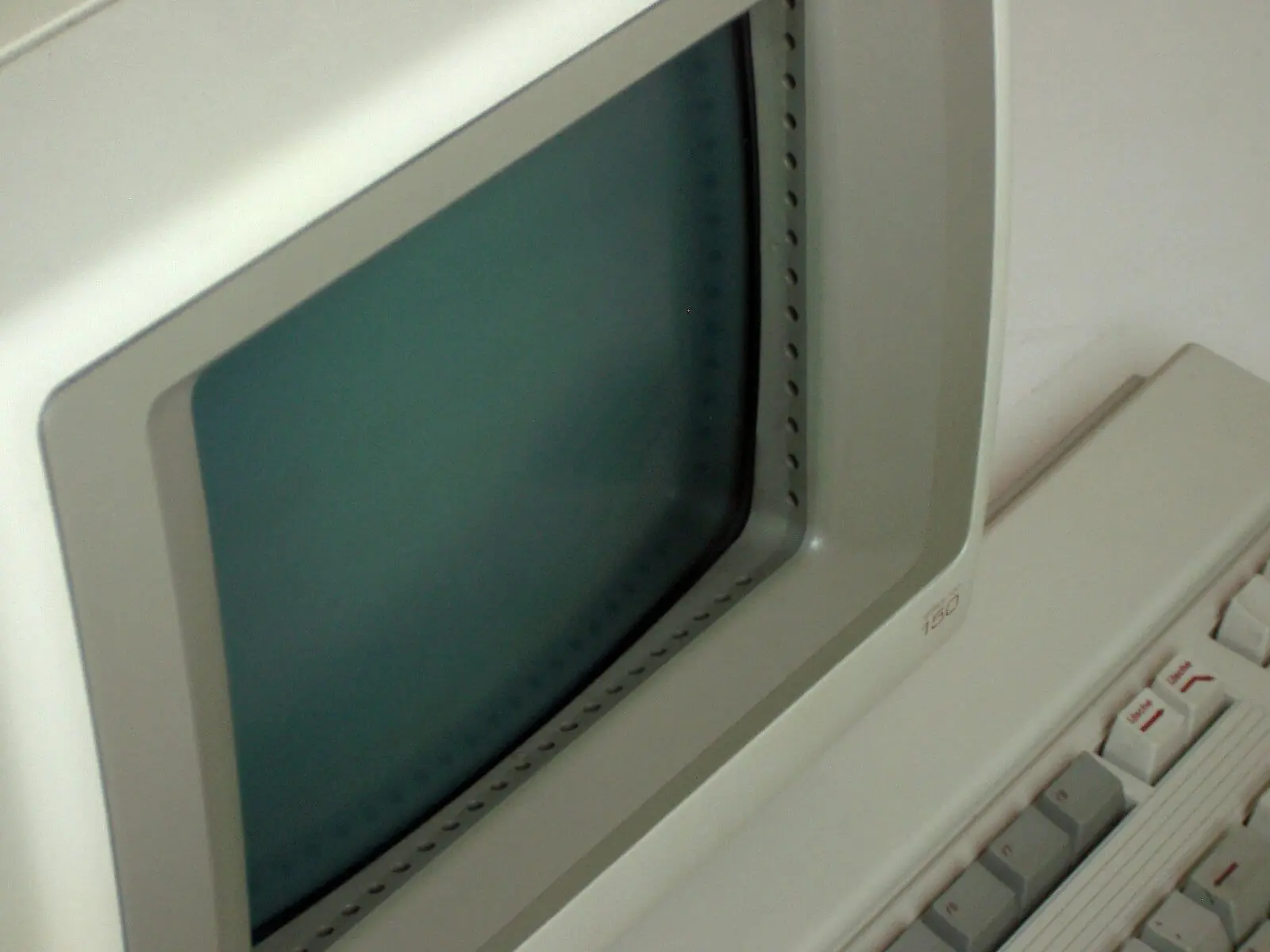Computers, love them or hate them, we rely on them every day. You’re using one right now! But have you ever stopped to think about who invented computers and how they came to dominate our lives? So who created the first computer, and whom can I blame for all those wasted hours?
You might be surprised to learn that many computer pioneers struggled to get funding for their ideas and faced skepticism from their contemporaries. The word "computer" is also much older than you might think!
The first computer, the Antikythera mechanism (200 BC – 70 BC), was mechanical. Initially, computers were people – it was a job title. The first computer was invented by Charles Babbage (1822) but was not built until 1991! Alan Turing invented computer science. The ENIAC (1945) was the first electronic general-purpose digital computer; it filled a room. The Micral N was the world’s first “personal computer”(1973). It was not a commercial success. The Epson HX-20 (1981) was the world’s first laptop, although you wouldn’t recognize it as a laptop today. The first Mac debuted in 1984.

The first computer
Early computers were actually people, not machines -- it was a job title. The word dates back to 1613. "Computers" performed complex calculations; they were mathematicians and bookkeepers.
The first-word "computer" was used to describe a machine was 1897.
Who made the first computer?
The first computer, that we know about, is the Antikythera mechanism (200 BC -- 70 BC). It is an ancient-Geek, hand-powered mechanical device. Archeologists believe it was used to calculate eclipses and other astronomical events.

A reconstruction of the Antikythera -- the world's first "computer".
The Antikythera mechanism was a 34 cm × 18 cm × 9 cm (13.4 in × 7.1 in × 3.5 in) inscription covered, wooden box with at least 30 gears. Due to its complexity, many speculate that it had several less complex predecessors.
Numerous clockwork "calculation machines" were created in the following centuries. Generally, these fulfilled a single purpose.
Who invented computers?

Charles Babbage
Charles Babbage, an English polymath, is often thought of as "the man who invented computers.” From 1822 until his death in 1871, he designed three computers, but never actually constructed any of them due to lack of funding.
In 1822 Babbage started working on a Difference Engine its purpose was to compute polynomial functions. If completed, it would have had some 25,000 parts, weighed 13,600 kg (15 short tons), and been 2.4 m (8 ft) tall.
Between 1847--1849 Babbage created drawings for the Difference Engine No. 2, a second "computer". Finally, In 1991, the British Science museum constructed the design from Babbage's original plans. Amazingly, it worked! It took six years to build, weighs 4535.92kg (five short tons), measures 2.1 m, 3.4m, 0.5m (6'11" x 11'2" x 1'8") , and has 800 parts.

< minor>Charles Babbage's Difference Engine No. 2, built in 1991
The Analytical Engine, a later Babbage computer design, would have had a whopping 675 bytes of memory! He named the CPU = The Mill" and the memory "the store.” Punch cards were used as input, based on the Jacquard Loom punch card system, invented at the turn of the 19th century.
In Babbage's time, calculations were typically done by human computers and were frequently full of error. He saw mechanical computers as a way to remove the error. Over 10 years, he received a staggering £17,000 (over £2,000,000 in 2020) from the British government. Unfortunately, they eventually lost faith in his idea and cut the funding.
The first electrical computers and WW2
As we all know, necessity is the mother of invention,n and never was that more true than during WW2! During this period, electromechanical computer technology speed rocketed.
Early electromechanical computers were a hybrid between modern electrical computers and analog computers. Electric switches drove mechanical relays, and although parts still wore out quickly, electrical switches could open and close around 1,000 times faster than mechanical ones, making electromechanical computers much quicker.
Who invented the first electromechanical computer?
In 1938 the United States Navy invented the Torpedo Data Computer (TDC), possibly the world's first electromechanical computer. It was designed to track a target, and aim & fire a torpedo from a submarine. At the time, the Japanese also had an automated, torpedo firing computer on their submarines. However, it was not capable of tracking a target.

Torpedo Data Computer -- one of the world's first electromechanical computers.
Who invented the world's first electromechanical, the programmable computer?

Konrad Zuse
Although largely unknown, Konrad Zuse could win the title of "the man who invented computers"!
In 1938, Germany, Zuse began work on the Z1: a mechanical calculator. It was constructed from around 12,500 individual, hand-cut, sheet metal parts, was self-financed, and was assembled in his parent’s living room. It worked on a binary system and was fed paper tape.
The machine could have been more successful as it produced unreadable results. It was also pretty slow. However, with help from his friend Helmut Freier, an electrical engineer, this formed the basis of the Z2...

The Z1 (reconstruction). Bombs destroyed the original model during WWII.
The Z2 (1939) was an electromechanical computer that was capable of slightly more varied functions. It took 0.8s to complete an additional operation,n and weighed over 270 kg (600 lbs).
Zuse quickly followed this with the Z3 (1941), the world's first working electromechanical programmable, fully automatic digital computer. It had a monitor, keyboard, and a 21-inch flatscreen! The user could write and feed programs using a strip of film.
The German Aircraft Research Institute used the Z3 to analyze wing flutter. Zuse requested funding to replace the relays with electric switches but was denied as it was deemed "not war important.”
Alan Turing

Alan Turing
While Zuse was busy in Germany, Alan Turing was designing the Colossus computer (1943) at Bletchley Park, England.
The Colossus computer was a fully programmable, electronic, digital computer, developed to aid British codebreakers in decrypting German radio telegraphic traffic. Unlike modern computers, it was programmed with switches and plugs.

Colossus computer. The most advanced computer of the time. Via Flicker: Mike McBey
Given our reliance on computers today, it is hard for us to imagine, but Turing needed help convincing his contemporaries of the importance of his work. Like many early computer scientists, he struggled to get the required funding.
Note: The Colossus computer is not to be confused with the Bombe: an electromechanical device designed by Turing and used to decode Enigma in 1940.
His work did not stop at the end of WW2! After the war, he worked at Manchester University, where he played a crucial role in developing early computing technology. He wrote several papers that still define the way of thinking about computer science today. Although he might not be the man who invented computers, Turin is undoubtedly the man who invented computer science!
When was the first electronic, digital computer invented?
The Atanasoff--Berry Computer "ABC" (1942) was the first automatic, electronic digital computer. However, it is not widely considered to be a "computer.” It lacked many of the functionalities of modern computers; it was designed for one specialist task and was not Turing complete.

The Atanasoff Berry Computer -- not considered a computer as it is not "Turing complete.”
The first electronic general-purpose digital computer
The ENIAC (Electronic Numerical Integrator and Computer) aka "the Giant Brian" (1945) was the first electronic general-purpose digital computer. It was fully reprogrammable and so, able to solve a complex number of problems. It could take several days to program because it was programmed via external switches and dials.
The ENIAC took 20 seconds to complete its first calculation; a mechanical computer would have taken 40 hours.

The huge ENIAC filled a room and required six programmers.
The ENIAC's first task was to study the feasibility of the hydrogen bomb. By the time it was decommissioned in 1955, it had been used to solve problems as diverse as wind tunnels, random number generators, and weather prediction.
The ENIAC contained 20,000 vacuum tubes, 7,200 crystal diodes, 1,500 relays, 70,000 resistors, 10,000 capacitors, and 5,000,000 hand-soldered joints. It was 2.4 m × 0.9 m × 30 m (8 ft × 3 ft × 98 ft), weighed over 27,200kg (30 US tons), and cost around $500,000 (over $6,600,000 in 2020) to produce.
The ENIAC consumed a staggering 150 kW of electricity, which led to a rumor that lights dimmed in Philadelphia whenever it was switched on. It could have been a more reliable machi, me too. Several tubes needed replacing every day.
The first electronic stored-program computer.
The first electronic stored-program computer was the Manchester Baby, Manchester, UK (1948). Although relatively simplistic to other computers of the time, it was the first computer to store its program digitally (not via wires and switches). It was also the first computer to use random-access memory and paved the way for the Ferranti Mark 1 -- one of the world's first commercially available computers.

The Manchester Baby, the first computer to store programs digitally.
The EDVAC (Electronic Discrete Variable Automatic Computer) was built in 1949 for the U.S. Army's Ballistics Research Laboratory. The design was based on the ENIAC. Like the Machester Baby, it also used a stored program.
The EDVAC was built from 6,000 vacuum tubes and 12,000 diodes, consumed around ⅓ of the power of its predecessor, and weighed a mere 7,800kg (8.7 short tons).
The first transistor computer
The Transistor Computer, built by Manchester University in 1953 was the first transistor computer or "second-generation computer". It was extremely unreliable and typically ran without error for just 1 ½ hours. However, it did not run exclusively on transistors and contained several tubes in its clock.
The Harwell CADET (Transistor Electronic Digital Automatic Computer -- backward) first ran in February 1955, and was the first fully transistorized computer in Europe, possibly the world.

The Harwell Cadet Computer, possibly the world's first fully transistorized computer in Europe
The other contender for the title "first fully transistorized computer" is the IBM 608 calculator, announced in April 1955 and no, it didn't fit in your pocket! There is a possibility this ran before the Harwell CADET, although no one can be sure. IBM claims the IBM 608 calculator to be "the first all-solid-state computing machine commercially marketed" and "the first completely transistorized computer available for commercial installation".
Who invented the PC?
François Gernelle invented the Micral N, the world's first "personal computer"(1973). It was, no, a commercial success.

Micral N, prototype model, the world's first PC (personal computer)
The Micral N had a speed of 500 KHz, was capable of running approximately 50,000 instructions per second,d and cost 8,500 French Francs (around €7,750 in 2020).
The MITS Altair 8800 (1974) was the first PC with any commercial success. The computer was so successful that the company hired extra staff to keep up with the demand!

The MIIT Altair 8800, the first commercially successful PC
The MITS Altair 8800 was sold as a kit for $439 (around $2,100 in 2020) -- you could pay extra for a pre-assembled model. Because of the versatility of this design, several enterprising individuals designed upgrades that users could add to their models.
The first portable computer
The IBM 5100 (1975) was the first, commercially successful, portable computer. Although it came with a handy travel case, earning it the "portable" title, it weighed 23 kg 50 lbs), so you probably wouldn't want to lug it around all day!

IBM 5100 -- the portable computer. It gave birth to the laptop.
The IBM 5100 had a 16-bit processor, took a quarter-inch cartridge (QIC) magnetic tape drive, and allowed users to switch the screen between white on black and black on white. Fancy!
What was the first laptop?
The first laptop was the Epson HX-20 (HC-20/HX-20). It was launched in Japan in 1981 and released internationally in 1982. It weighed just 1.6 kg and was about the size of an A4 piece of paper, which formed a key part of the marketing campaign.

The Epson HX-20 -- the world's first laptop.
The Epson HX-20 had a 120 × 32-pixel LCD screen, capable of displayingfour4 lines of 20 characters and running on battery power that lasted 50 hours! It even featured a built-in calculator-style roll printer. However, it was not in the flip-form "clamshell" laptop shape we are accustomed to and instead came with a travel case.
The first flip-form laptop
Although maybe a little strangt, the first flip-form laptop, was the Dulmont Magnum, released in Australia in 1981--82. When it was released internationally in 1984, it cost $8,150 (around $20,000 in 2020).

The Dulmont Magnum, the first flip-form laptop
The Dulmont Magnum came with a word processor, spreadsheet, telecommunications, file manager, appointment manage,r and an 8 x 80 character LCD screen.
The first Mac
Steve Jobs unveiled the first Macintosh in 1984. It had a 23cm (9") CRT monitor and came with a keyboard and mouse. It also had a handle,e so it could, theoretically, be considered a "portable computer.” It sold for $2,495 (roughly $6,200 in 2020).

The first Macintosh computer was launched in 1984.
The 1984 Macintosh was built without a cooling fan to keep the computer quiet. However, this caused the computer to overheat, resulting in many component failures.
First Touch Screen
The HP-150 (1983) was one of the earliest commercialized touchscreen computers. A series of vertical and horizontal infrared light beams crossed before the screen. Touching the screen would break the infrared and place the cursor at the desired location.

The Hp150 was the first computer to use touch-screen technology. Here you can see where the light shone out over the screen. When a finger broke the light beams, the cursor moved to the location.
The computer sold for $2,795 (around $7,234 in 2020).
Who invented computers?
So, who invented computers? Was it Babbage, Turin, Zuse, or some ancient civilization? Is there someone you think I've left out? Let me know what you think in the comments below.
Computer & CAD
Today, computers play a crucial role in various industries, including architecture, engineering, and construction. Computers in these fields have led to the development of computer-aided design (CAD) software, allowing architects, engineers, and construction professionals to create detailed, three-dimensional models of buildings and structures.
One such CAD software is BricsCAD, a powerful CAD software that provides architects, engineers, and construction professionals with the tools they need to create accurate, detailed, and professional-looking drawings. BricsCAD offers a wide range of features, including 3D modeling, drafting, and design tools, and is known for its intuitive interface and powerful functionality.
In conclusion, the invention of the computer has come a long way since its inception in the 19th century. Today, computers play a vital role in various industries, and BricsCAD is one example of how technology has transformed the architecture, engineering, and construction fields. Whether you're a seasoned professional or just starting, BricsCAD provides the tools you need to bring your designs to life.
Further reading:
- Timeline of computing history
- The Guardian -- History of the internet
- BBC News -- Difference Engine No 2 built
- The Jacquard Loom punch card
- The history of the Z1, Z2, Z3 and Z4 computers
- Encyclopedia Britannica -- The Personal Computer
- The Micral computer
- Charles Babbage: And the Engines of Perfection, Bruce Collier, James MacLachlan -- eBook
- On Computable Numbers, with an Application to the Entscheidungsproblem, Alan Turing, 1936.
- Etym Online -- The word "computer"
- IBM website -- the IBM 608 transistor calculator and other 1955 developments
Explore BricsCAD
Download BricsCAD Free Trial | Sign Up For News & Updates | Shop Online For BricsCAD Desktop Software


